the putter
Cooper Griggs
Shared posts
Retired NASA probe brought back to life after 27 years drifting in space
 The last time ISEE-3 fired its engines, Madonna was moving up the charts, the stock market was booming and President Reagan was busily denying that he'd secretly sold weapons to Iran. After that final gasp from its thrusters, in February 1987, the...
The last time ISEE-3 fired its engines, Madonna was moving up the charts, the stock market was booming and President Reagan was busily denying that he'd secretly sold weapons to Iran. After that final gasp from its thrusters, in February 1987, the...
mis0happy: Japanese Food Pun stickers are now available in my...








Japanese Food Pun stickers are now available in my shop!
$6 for set of 7 stickers
Sizes range from 1-2 inches in width
Hand-cut & packed to order
Printed on matte sticker paper
punhusky.jpg
Seinfeld is finally streaming online. Here are 5 ways it changed television.

Seinfeld, which turned 25 in 2014, is now available to stream online, in its entirety, thanks to Hulu. The series is self-evidently one of the most influential television programs ever made; when it debuted in 1989 it entered a sitcom landscape that was still shaking off the last cobwebs of the 1970s sitcom revolution, and it suggested, boldly, that sitcoms didn't need to be about important issues or even use traditional storytelling methods to be great. Instead, they could just focus on the minutiae of life, the little bits and pieces of larger things that add up to form our points of view. It was a show that reveled in detritus.
Easy to miss in all of that, however, were all of the ways that Seinfeld influenced TV via its underpinnings. Jerry Seinfeld's observational humor affected many other shows of the era (as well as many that premiered long after the series had ended). The "single people living in the big city" premise became the centerpiece of seemingly every other sitcom. But Seinfeld was so huge that it influenced television in many smaller ways, too. Here are five of them.
1) Seinfeld changed the way sitcom stories are written
It's not terribly exciting to think about television in terms of its story structure — the storylines, scenes, and raw dramatic beats that make up any given episode of TV — but Seinfeld's impact on television comedy is actually most pronounced in this arena. The famous "show about nothing" pitch obscured just how much structural work was going on beneath the show's hood. Prior to Seinfeld, most sitcoms broke down into an A-story and a B-story, and the surrounding material could take the form of a so-called "runner," a joke that continued throughout the episode and told a very loose story but didn't do much more than that.
Particularly in its best episodes, Seinfeld blew all of that up. Even in an episode like the famous "The Contest" (the one with the competition to see which of the central foursome can go the longest without masturbating), each of the four characters has their own storyline, all four of which converge in the final moments to create a whole that's larger than its parts. The best Seinfeld episodes are marvels of story structure, with jokes and storylines dovetailing and tucking into each other in ways that can be as thrilling as any twist in a plot-heavy drama.
This approach has become incredibly common since Seinfeld left the air. In particular, it's useful to look at Arrested Development, one of the show's most obvious heirs and one where individual episodes could contain up to nine stories (one for each regular character) that collided by the time the episode ended. Not every show uses the Seinfeld structure (and some, like Everybody Loves Raymond, used structures that were deliberately as little like Seinfeld as possible), but the series gave other shows the option of pursuing far more than the typical two stories per episode.
2) It made us want to watch self-involved jerks
Matt Zoller Seitz made this point ably over at Vulture last week: while much of the credit for the age of antiheroes — which TV is just exiting — often gets placed at the feet of The Sopranos, Seinfeld was just as much of an influence. Writes Seitz:
Seinfeld's impact resonated beyond comedy. Its serene belief that characters did not have to be likable as long as they were interesting foreshadowed a change in TV drama that wouldn't settle until the late '90s, when HBO turned a show about violent gangsters into an award-winning hit. We tend to forget that the first coldly expedient hero to anchor an influential, long-running series named after him wasn't Tony Soprano. It was Jerry Seinfeld.
Yet look beyond just Jerry, and you see that Seinfeld is filled with the sorts of self-involved jerks who would drive many of the best TV shows of the last decade. Seinfeld is perhaps the earliest series to essentially dare the audience to identify with its characters by seeing their own worst traits reflected in them. It believed it could do this simply by crafting characters who were as interesting and funny as possible. It was mostly right.
Take the character of George, perhaps the show's most compelling, most loathsome figure. We empathize with George because we recognize in his character all of the times we've been unable to escape our own limitations and weaknesses. But look at him from another perspective, and he's a ‘90s riff on what we might now call "nice guy syndrome." And the show endlessly mocks him for it!
George essentially believes he deserves to have sex with a beautiful woman because he's a white guy living in modern America, and when he doesn't succeed (but Jerry or Kramer does), he grows ever more petulant. He doesn't particularly want to strive to succeed. He just wants life handed to him on a silver platter. That was the kind of character TV hadn't really seen before Seinfeld hit the air, but it's also the kind of character who's everywhere now, and often on shows that don't realize Seinfeld worked because the joke was much more often on George (or Jerry or Kramer or Elaine) than it was on anybody else.
3) Elaine Benes is a tremendously influential female character
Funny women in control of their own destinies existed on television before Elaine, but Elaine was the first one who was simply allowed to unapologetically be whatever she wanted to be. Even a short year before Seinfeld debuted, a show like Murphy Brown had to essentially center everything on the fact that its protagonist was a single woman making her way through her life and work. Also worth considering is the Jamie Lee Curtis and Richard Lewis vehicle Anything But Love, which debuted a few months before Seinfeld and had much in common with it (including a large number of scenes set in diners during which Curtis and Lewis discussed the oddities of modern life), but constantly felt the need to make Curtis's arc largely about her romantic prospects or lack thereof.
Elaine was different. Many of her stories were about her love life, but she also had weird jobs and got just as involved in the shenanigans of a given episode as any of the male characters. Thanks to the work of Julia Louis-Dreyfus, one of the great comedic actresses of American television, Elaine could be both deeply weird and deeply feminine. TV hadn't known a character like her before, and she paved the way for everyone from Leslie Knope to Hannah Horvath.
4) It predicted the growing whiteness of network television
Little of this is Seinfeld's fault; television's whiteness has far more to do with the Clinton-era repeal of the Financial Interest and Syndication Rules (a subject for another time). But it's worth pointing out that the centerpiece of NBC's very diverse 1980s Thursday sitcom lineup was The Cosby Show, while Seinfeld was the centerpiece of its very white 1990s Thursday sitcom lineup. It more or less made sense for Seinfeld to be as white as it was. The show was, after all, famously rejected by audience testers, and NBC's Brandon Tartikoff worried it was "too New York, too Jewish." It was, to a real degree, about four people who were incredibly limited in their perceptions and worldviews, so a certain amount of tunnel vision made sense.
But Seinfeld was also the unlikely beneficiary of the fact that the television landscape was changing. By its final season, the series was a mega-hit, watched by large numbers of people in all demographics. However, in its early years, it struggled in the ratings, kept alive by critical acclaim and awards attention, sure, but also because the people who were watching it were more demographically desirable to advertisers. And what that usually means is young white people with lots of money who live in cities.
As that demographic was targeted with more and more focus in years to come, it would lead to shows with fewer and fewer people of color, shows that could be good (Friends or Girls) or bad (the many, many Seinfeld clones of the mid-'90s) but still shows that were overwhelmingly about a bunch of white, affluent people who never had to worry about anything but the trivial details of life. What felt revolutionary on Seinfeld quickly curdled into something harder and harder to stomach on the many shows it inspired.
5) It heralded the death of the multi-camera sitcom
When television experts talk about a "multi-camera" sitcom, what they mean is a sitcom that functions almost as a filmed play, with multiple cameras (usually four) in fixed positions capturing the action of a sitcom taping, usually in front of a live audience. Think of the difference in presentation between Cheers (a very classical multi-camera sitcom) and Modern Family (which is what is usually called a "single-camera" sitcom and is presented much more cinematically than theatrically). The evolutionary history of the sitcom format can be split into two periods, with Seinfeld as a rough dividing line.
NBC actually forced creators Seinfeld and Larry David to make the show a multi-camera, but once the two were committed to doing so, they essentially broke all of the established rules of how multi-camera sitcoms worked, twisting and bending them so far that the multi-camera sitcom had essentially nowhere else to go if writers wanted to continue to innovate.
The longer the show ran, the more single-camera sequences it inserted into the action. (Think, for instance, of all of those scenes with characters walking down city streets, which were pre-taped and aired for the studio audience, instead of being presented live on stage.) And the longer it ran, the more it broke those stories up into smaller and smaller pieces, presaging the joke-a-second pace most single-camera sitcoms run at today.
And yet Seinfeld stands as a testament to how good multi-camera sitcoms can be at their best. Several of the show's sequences would only work in the more theatrical trappings of the multi-cam, and the performers' broadness was also given greater latitude by the format.
Think of the famous story George tells about removing a golf ball from a whale's blowhole. On a single-camera sitcom, that might be presented to the audience as it happened. On Seinfeld, which was limited in how much location filming it could do, the story becomes a yarn for Jason Alexander to spin, and that makes all the difference in terms of humor.
Seinfeld left big shoes for the sitcom to fill. Some (like Raymond) might have returned to a more deliberately classical vibe. But others pushed past it and found that the only territory left to explore involved finding new ways to film these sorts of shows. Seinfeld might have been something of an endpoint for lots of different sitcom techniques, but it was also the beginning of many, many others.
Discovering the final frontier
Cooper GriggsThat Mars photo is amazing!
The European Space Agency is frequently uploading impressive photos and other images from their projects to Flickr. Follow them to make sure you don’t miss spectacular sights like the shots of Mars, Venus, Saturn, supernovae and the Crab Nebula below.
British Airways confirms uncharged devices will be banned from US-bound flights

UK airline to comply with US government requirements
Future contraceptives will let women remote-control their fertility
 Contraceptive implants are nothing new, but the current generation of progestogen-releasing devices need to be replaced every three years and have to be removed if you want to try for a baby. That may change soon, however, now that the Gates...
Contraceptive implants are nothing new, but the current generation of progestogen-releasing devices need to be replaced every three years and have to be removed if you want to try for a baby. That may change soon, however, now that the Gates...
NSA trove shows 9:1 ratio of innocents to suspicious people in "targeted surveillance"

In many cases, it's clear that the NSA has good reason to be concerned about its surveillance targets, but it's also clear that the collateral targets -- who far outnumber the first group -- have intimate, totally irrelevant information about their lives collected and retained by the spies, where it is routinely accessed by spies, analysts, and private-sector contractors.
Almost everything in the NSA cache is haystack, in other words, with just a few needles. And the hay is deliberately collected and retained, even though it consists of things like love notes, baby pictures, medical records, and other intimate data belonging to people who are under no suspicion at all.
And while foreigners -- myself included -- are justifiably anxious about the possibility that the NSA faces no legal hurdles to collection of our data, it's significant that the NSA deliberately targets Americans in the USA and abroad. That's because the NSA is legally enjoined from spying on Americans, and the proof that the agency is flouting this prohibition is evidence of illegal activity and strengthens the case for more oversight, reform and intervention from the US Congress.
The NSA uses laughably sloppy tools for deciding whether a target is a "US person" (a person in the USA, or an American citizen abroad). For example, people whose address books contain foreign persons are presumed by some analysts to be foreign. Likewise, people who post in "foreign" languages (the US has no official state language) are presumed by some analysts to be non-US persons.
When the NSA does determine that it is intercepting US persons' communications, it is required to take "minimization" steps on any data it retains. However, many of these minimization steps are likewise laughably inadequate -- for example, in early 2009, the files refer to "minimized U.S. president-elect," rather than Barack Obama, but you hardly need be a surveillance mastermind to make sense of this.
The documents reveal how the controversial "section 702" of the Foreign Intelligence Surveillance Act has become the go-to basis for surveillance, 702 further lowers the bar for conducting surveillance from the already generous height at which it had been previously set. In the cache, the Post reporters see evidence that analysts whose judicial surveillance authorization warrants have expired then switch to 702 as their basis for continuing spying, rather than demonstrating to a judge that their cause is good.
Snowden says he released this cache to the Washington Post to better inform the debate about 702. The NSA's allies in Congress talk about 702 as something used in special cases and with due care. But it's clear from these documents that 702 is a legal back-door that lets spies avoid the very generous and casual oversight of the FISA court, a veritable rubberstamp factory that grants virtually every NSA request.
Last week's revelations about the NSA's "targeted" surveillance program showed us that NSA wordsmithing has distorted the word "targeted" beyond all recognition, but that was about a largely automated system that spied on people based on stupid, automated rules (albeit rules that a human being had created and put in place).
In this story, we see that even when a trained NSA analyst is making individual, case-by-case decisions about which people to target, s/he can be expected to get it wrong nine times out of ten.
Nice shooting, Tex.
-Cory Doctorow
In NSA-intercepted data, those not targeted far outnumber the foreigners who are [Barton Gellman, Julie Tate and Ashkan Soltani/Washington Post]
(Image: Archery, Vassilis, CC-BY-SA)
This entry passed through the Full-Text RSS service — if this is your content and you're reading it on someone else's site, please read the FAQ at fivefilters.org/content-only/faq.php#publishers.
AMC adds recliners to its theaters in hopes that you'll ditch Netflix for a night
Cooper GriggsI haven't been to AMC yet, but the one time I spent the extra cash to watch a movie in a high theater was such a luxury. Very nice.
 If you've given up on your local movie theater due to its lack of comfort and not the ever-increasing expense, AMC has a plan to lure you back. The second-largest movie chain in the US is shelling out $600 million to rip out old seating and replace...
If you've given up on your local movie theater due to its lack of comfort and not the ever-increasing expense, AMC has a plan to lure you back. The second-largest movie chain in the US is shelling out $600 million to rip out old seating and replace...
okkultmotionpictures: EXCERPTS >|
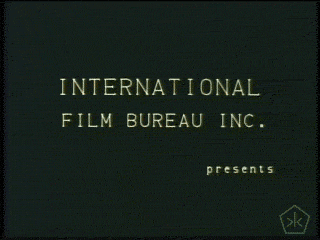
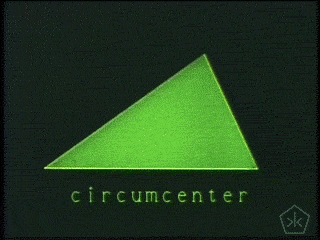

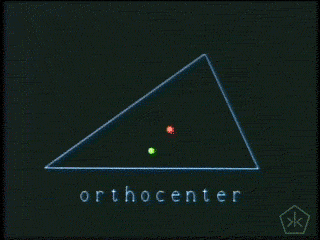
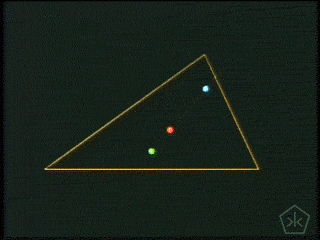



EXCERPTS >|Journey to the Center of a Triangle (1976)
| Hosted at: Internet Archive
| From: Academic Film Archive of North America
| Download: Ogg | 512Kb MPEG4 | MPEG2
| Digital Copy: not specified
A series of Animated GIFs excerpted from Journey to the Center of a Triangle (1977): another fabulous film by the Cornwells, created on the Tektronics 4051 Graphics Terminal. Presents a series of animated constructions that determine the center of a variety of triangles, including such centers as circumcenter, incenter, centroid and orthocenter. More on the Cornwells at http://www.afana.org/cornwell.htmAccording to son Eric Cornwell, here’s how the film was made: The 4051 produced only black and green vector images, not even grey scale. The film’s scenes were divided into layers in the programming, one layer for each of the colors in the scene, and each was shot separately onto high-contrast fine-grained b&w film stock. The final scene in “Journey” had 5 layers: one for each of the four colored dots, plus one for the white triangle and line.
These five clips were then multiple-exposed onto color film on an optical printer, using colored filters to add the desired color to each black&white layer as it was copied. The resulting color was much better than a film of an RGB display would have been because the color filters on the optical printer allowed access to the full range of the color negative film, allowing much more saturated colors. All of that color is pretty much lost now, between prints fading and/or transfers to the VHS, and then viewing them on a computer screen which has a much more limited color gamut. Please imagine it all in bright, brilliant colors. (from Internet Archive)
We invite you to watch the full video HERE.
EXCERPTS by OKKULT Motion Pictures: a collection of GIFs excerpted from out-of-copyright/historical/rare/controversial moving images.
A digital curation project for the diffusion of open knowledge.>|
Congo: A Group of Chimpanzees Seem to Have Mastered Fire

Ubundu| A group of bonobo apes living in the Salonga National Park, may have mastered the basic practice of creating and using fire. This particular group of almost three hundred specimens from this rare and extremely intelligent race of great apes, have been under close surveillance by a team of primatologist for the last three years, and seem to have recently developed a primitive fire building technique using rocks and twigs.
The bonobo, formerly called pygmy chimpanzees, is a omnivorous great ape found in a 500 000km2 area of the Congo Basin in the Democratic Republic of the Congo. It is mostly popularly known for its high levels of sexual behavior and its use of almost a dozen different primitive tools. Its level of intelligence is already considered to be almost unique amongst ape, being topped only by humans. Two bonobos at the Great Ape Trust in Iowa, Kanzi and Panbanisha, have been even taught how to communicate using a keyboard labeled with lexigrams (geometric symbols) and they can respond to spoken sentences. Kanzi’s vocabulary consists of more than 500 English words and he has comprehension of around 3,000 spoken English words.
It is however, the first time that a group of these primates develops some technical concepts as elaborate as these on their own. A few individual apes seem to have originally developed a rudimentary technique of rather poor efficiency, but the group gradually improved it through experimentation and observation over the last few months. They are now able to create and maintain a fire, which they have been using mostly to scare off predators and cook some of their food. Some individuals in particular among the group, seem to have rapidly grown a taste for cooked foodstuffs, especially flying squirrels. This also enabled the group to develop to a population which is much larger than has ever been encountered in the species, by bringing increased security and by diversifying food sources.
This absolutely astonishing evolution has gotten primatologists as well as many other scientists from around the world, really excited. This could be a unique occasion to study the evolution of a species during a crucial moment of its history, and could bring a lot of information concerning the early developments of humankind. The congolese rural population of the other hand have a very different perception of the situation, as “torch bearing apes” have been accused of setting fire to more than 1500km2 of forest since the beginning of the year, causing the death of three people.
06.30.2014

Copy this into your blog, website, etc.
...or into a forum
[IMG]http://www.flashasylum.com/db/files/Comics/Dave/waiter1.png[/IMG][/URL]
Cyanide & Happiness @ [URL="http://explosm.net/"]Explosm.net[/URL]
Record-breaking magnet crams three tons of force into the size of a golf ball
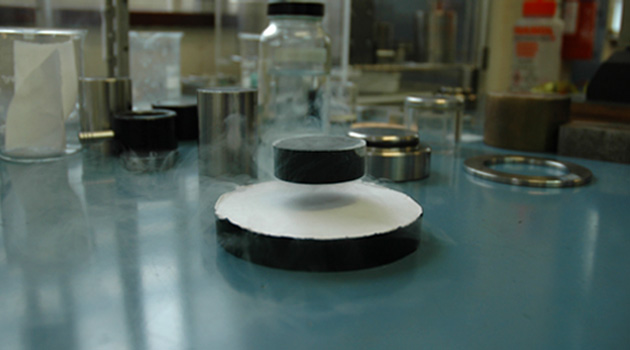 University of Cambridge scientists have broken a decade-old superconducting record by packing a 17.6 Tesla magnetic field into a golf ball-sized hunk of crystal -- equivalent to about three tons of force. The team used high-temperature...
University of Cambridge scientists have broken a decade-old superconducting record by packing a 17.6 Tesla magnetic field into a golf ball-sized hunk of crystal -- equivalent to about three tons of force. The team used high-temperature...
You are my favorite everything. New drawings at...

You are my favorite everything.
New drawings at Explodingdog.com. (well, they were new on Thursday)
Drawn from titles submitted via Patreon
07.02.2014

Copy this into your blog, website, etc.
...or into a forum
[IMG]http://www.flashasylum.com/db/files/Comics/Kris/gin.png[/IMG][/URL]
Cyanide & Happiness @ [URL="http://explosm.net/"]Explosm.net[/URL]
girlwithalessonplan: Be courteous with your fireworks this...

girlwithalessonplan: Be courteous with your fireworks this year, folks.
Found via: Military with PTSD
i feel like a major asshole for not having considered this.
Flickr Friday: The Golden Hour selection
Our last Flickr Friday theme was #GoldenHour.
Going through the group pool to select our favorites, we were touched by the golden light all your photos radiated. There were portraits and landscapes, street scenes and food photography, cityscapes and animals, and many other interpretations. You also explored how the light of the Golden Hour transforms the sun in the lake into pure gold. Thank you for all of your contributions to celebrate this magical moment of the day.
These are some of our favorite submissions to the Flickr Friday pool.
Mythbuster Adam Savage explains how to bring cartoons to the real world with an iPhone
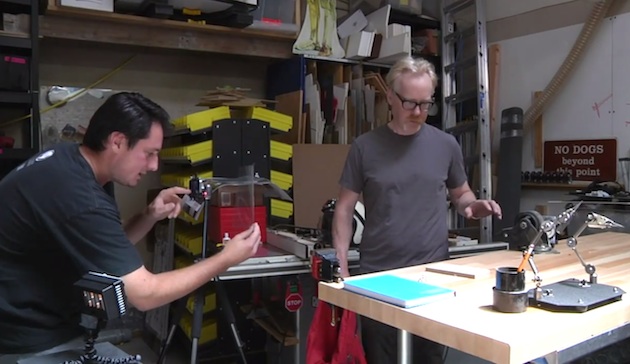 Last month, you might remember seeing the work of storyboard artist Marty Cooper (aka Hombre McSteez). If you didn't (then go watch it right now), he's the man behind "Aug(De)mented Reality," a three minute collection of entertaining stop-motion...
Last month, you might remember seeing the work of storyboard artist Marty Cooper (aka Hombre McSteez). If you didn't (then go watch it right now), he's the man behind "Aug(De)mented Reality," a three minute collection of entertaining stop-motion...
A Softer World
Cooper Griggsread the rollover too
Layered Glass Table Concept Creates a Cross-Section of the Ocean






We’ve seen no shortage of projects using layers of glass to simulate bodies of water the last few days. First we had glass sculptures by Ben Young, followed by several amazing river and lake tables Greg Klassen. Now we have designer Christopher Duff of Duffy London who has released concept images of the Abyss Table, a carefully layered table made from sculpted Perspex and wood that creates a geographic cross-section of the ocean. The tables will be limited to a series of 25 and are available for purchase here.
It should be noted that these are digital renderings of what the final piece should look like, it will be great to see photos of the actual tables once they are built. You can see a few more renderings on their Facebook page. (via designboom)
Amazing Solar Flare Eruptions Captured by NASA’s Solar Dynamics Observatory

Credit: NASA SDO
This amazing composite image taken by NASA’s Solar Dynamics Observatory (Little SDO) shows a series of significant solar eruptions that occurred over a period of three days back in January of 2013. The photo was created using three wavelengths of light that have been colorized in red, green, and blue to better show the dynamics of each eruption. You can read more about solar scientist Nathalia Alzate’s findings regarind the event over on this Facebook post. (via This Isn’t Happiness)
Table Topography: Wood Furniture Embedded with Glass Rivers and Lakes by Greg Klassen










Furniture maker Greg Klassen builds intricately designed tables and other objects embedded with glass rivers and lakes. Inspired by his surroundings in the Pacific Northwest, Klassen works with edge pieces from discarded trees (often acquired from construction sites, or from dying trees that have begun to rot) which he aligns to mimic the jagged shores of various bodies of water. The pieces are completed with the addition of hand-cut glass pieces that appear to meander through the middle of each table. You can see much more of work here, and several tables are available through his shop.
The Cloud: An Interactive Thunderstorm in Your House



Multidisciplinary designer Richard Clarkson experiments with products, lights, and furniture in time split between his New York and New Zealand studios. One of his most elegant creations is Cloud, an interactive light shaped like a cumulus cloud that simulates a thunderstorm both in light and sound based on external input from either a remote control or motion sensors. From Clarkson’s website:
The Cloud is an interactive lamp and speaker system, designed to mimic a thundercloud in both appearance and entertainment. Using motion sensors the cloud detects a user’s presence and creates a unique lightning and thunder show dictated by their movement. The system features a powerful speaker system from which the user can stream music via any Bluetooth compatible device. Using color-changing lights the cloud is able to adapt to the desired lighting color and brightness. The cloud also has alternative modes such as a nightlight and music reactive mode.
Watch the video above to see how it works, and see the different variations in his online store. (via Really Sh*t!)








 facebook
facebook reddit
reddit















